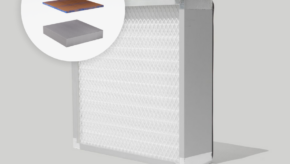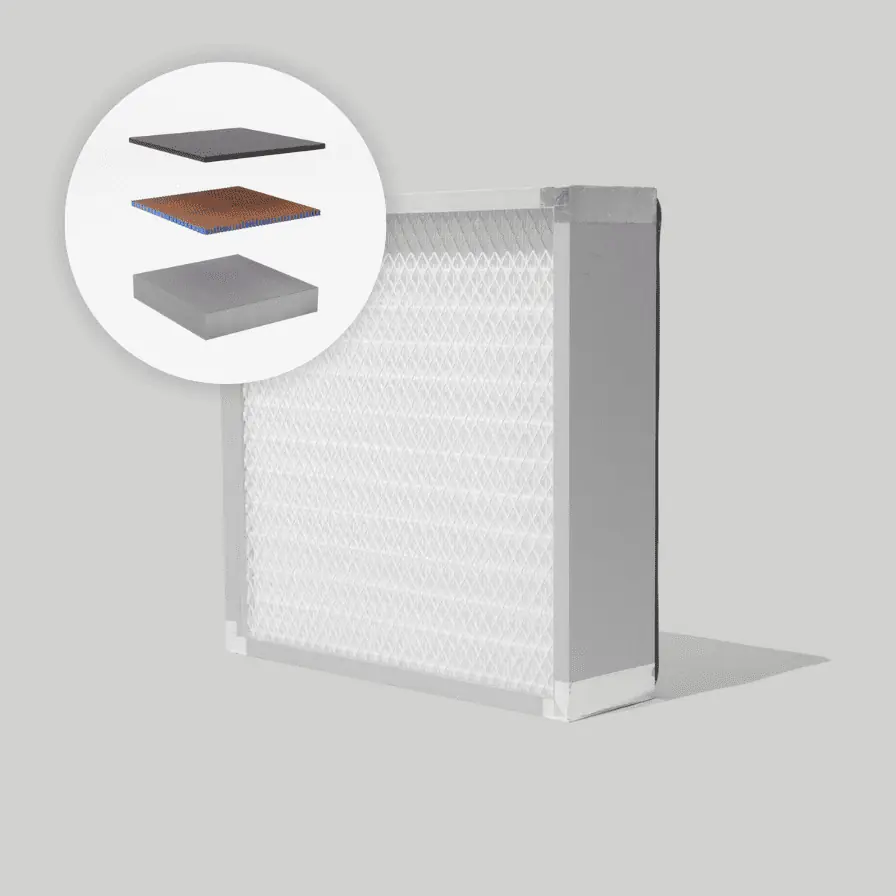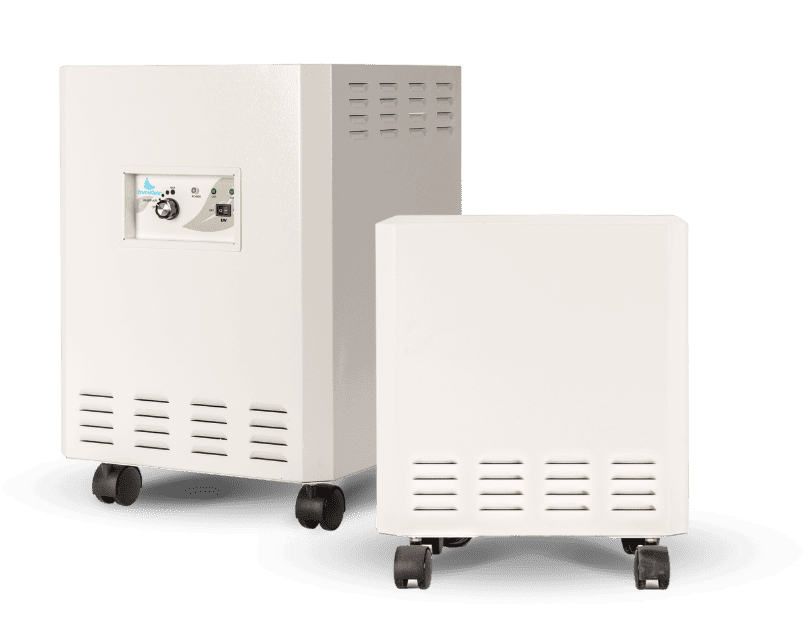Cleaning your home’s indoor air and even the air inside of a commercial/industrial space has never been as easy as it is today. Over the years there have been many advancements and additions to this industry that has made not only the ability to clean indoor air spaces much easier but with the added difficulty of many decisions to be made when it comes to selecting the ideal air purifier technology that is both safe and effective for the environment and for human health. From ozone technology, to carbon and activated carbon, and even the popular negative ion (ionization) technology – along with some new competing air purifier technologies, the air purifier choices have expanded drastically!
Negative air ions or ionization was discovered more than 100 years ago and has since been widely used in many filtration solutions including air purifiers and filters. This technology has experienced and been the center of many controversial claims and issues, specifically regarding the emission of ozone from the ionization process. Are ionization air purifiers still a safe option to use for air purification and how exactly do negative ions in air purifier work?
In this article we are going to learn more about negative ion filtration technology and discuss alternative air purification options that may be superior for your indoor environment’s air than ionic air purifiers.
What is an Ion and How is it Formed?
Ions are the key component to the ionization technology used for air filtration, however, to understand how the technology works you will first need to know what an ion is and how it is formed in the environment. Ions are electrically charged particles that form when atoms lose or gain electrons in the air space. These electrically charged particles have the same electronic structure as noble gases, and metal atoms will form a positive ion, whereas nonmetal atoms will form negative ions. An ion is formed when their outer electron shell is full, and this occurs when they have eight electrons in them – these can either take on a negative or positive charge.
Negative ions can and will occur naturally in some environments, especially near waterfalls or after rain, leaving a positive effect on humans, animals, and even in the environment due to the pure air created from the negative ions. Ionization machine or ionic air purifiers also work through negative ion formation to emit a steady stream of these ions into the air to form a reaction that makes pollutants attracted to the ion molecule in the air. The ions will than react with the pollutants to weigh the pollutants down, allowing them to settle onto the surfaces in the environment.
Negative Ion Technology
Negative ionization or negative ion technology has been used for many years both widely used in home’s and industrial environments to clean the indoor air. This air purification technology works through ions, which are particles that are found in the air that have acquired a positive or negative electrical charge by losing or gaining electrons. These air purification machines that utilize ions as the key component to their filtration process are specifically designed to put more negative ions into the air by using a high voltage needle or wire to add an extra electron to air molecules and then disbanding them back out into the indoor environment. After this process occurs the negatively charged ions will attach themselves to other contaminants – which usually are positively charged particles. As the negative ions attach to these contaminants in the air, they will clump together until the collection of particles becomes heavy and falls to the floor or surfaces in the environment.
This technology gained popularity due to its quiet operation, low replacement costs, and its ability to filter particles out of the air fairly efficiently. Ion technology does not require the use of a fan within its air purification system, which makes the system seemingly quiet in the environment, a major plus for many homeowners. In addition, unlike many air purification technologies, ion technology does not require extensive filter replacements which can become costly with some air purifier technologies.
How Does an Air Ionizer Work?
An air ionizer is a device that you can integrate into an indoor home that uses a unique form of ionization technology to clean the air around you. This specific air purifier technology claims to get rid of particles as small as 0.01 microns in size including pollen, bacteria, allergens, and dust that cause breathing problems and overall lower health. As we discussed earlier, this technology operates through the emission of negatively charged ions into the air that strive to attach to pollutants in the air to form a bond that will be weighted down to the surface(s). In some cases, the air ionizer will have within its system an electrostatic collection plate that will trap the bonded ions and particles to the plate – which can easily be cleaned and used for the life of the device.
However, although there are many benefits to the use of this technology there is also air ionizer dangers in an indoor environment, there have also been significant hazards that have been identified by the use of this air purification technology – including health problems and environment issues. Ionizers have been proven to emit ozone into the environment, a hazardous by-product that can be dangerous to human health and indoor air quality in higher concentrations.
Are Ion Air Purifiers Safe?
A common question when it comes to the effectiveness of ion air purifiers relates to how safe an ionic air purifier technology is to public health in the environment? According to a report by WebMD, an investigation led by Consumers Union (CU) – a testing group that publishes Consumer Reports – found that five of the bestselling models of ion air purifiers emitted relatively high levels of ozone into the environment. Many ionic air purifiers will produce ozone, a molecule composed of three atoms of oxygen, that can ultimately wreak havoc in the environment to human health.
Two atoms of oxygen form the basic oxygen molecule that is needed for human survival – and ozone will be the combination of oxygen plus an extra oxygen atom to form the ozone molecule. When ozone molecules are inhaled into the human body, according to the EPA, it can lead to damage of the lungs and other health consequences, such as the following;
“Relatively low amounts can cause chest pain, coughing, shortness of breath and throat irritation. Ozone may also worsen other chronic respiratory problems such as asthma and will ultimately contribute to the inability of the body to fight off respiratory infections in some cases.”
Air Purifier vs Ionizer
Have you heard comparisons between an air purifier vs ionizer air purification system? There are a wide variety of different air purifiers and technologies used today on the market, with some of the most popular technologies including carbon air filters, ozone machines, ionization technology, and HEPA filtration, to name a few. The development of air purification technologies has led to many advancements in air filtration, particularly in residential and commercial environments. Some of these air purifiers will emit byproducts into the air, others will use chemical-doping agents to capture contaminants into a filter, and others will utilize thick filters to capture and remove pollutants from the air like a HEPA filter.
Ionizers work through the emission of byproducts, similar to an ozone machine, that will emit ions and potentially ozone molecules into the environment. Often times, it is beneficial to avoid the use of these types of air purifiers in environments where there are people present such as a home that can be exposed to these by-products in the air for long durations of time or at high concentration levels. If an individual is exposed to by-product emissions like ozone in the air it can lead to the development of certain health issues that may plague an individual’s health significantly over time.
Ionizer Air Purifier Side Effects
If you have an ionizer air purifier in your home, the potential health risks can be significant to those who are frequently exposed to the by-product emissions released into the environment from these ionization purifiers. As we discussed previously, some ionic air purifiers will emit ozone into the environment through their filtration process. The production of ozone into the air in higher concentrations can lead to certain health reactions in those who are exposed to these molecules in their indoor environment. Higher concentrations of ozone inside of a confined indoor environment like a home can lead to health effects that can range from acute to severe, and these symptoms can include the following, according to Home Air Guides;
- Pain in the chest
- Irritation of the throat
- Impaired lung function
- Asthma triggers
- Shortness of breath
- High likelihood of getting respiratory infections
Alternative Safe Air Purifiers & Technologies
Is it surprising to learn that some air purification devices are not the safest for human health and indoor air quality? Who would have thought that a device that was designed to clean and filter the indoor air could potentially pollute the indoor air and exacerbate certain health conditions, depending on the air purification technology that is utilized in the air purification device. There are many different air purification technologies available to consumers including activated carbon or charcoal, ozone, ionization, HEPA filtration, and more.
The factors that a consumer should consider when purchasing an air purifier will include the overall safety of the air purifier technology, what kind of technology is utilized, are byproducts or chemical released or emitted into the air, how effective the air purifier is at removing a broad spectrum of pollutants from the air, and the cost for replacement filters over the life of the purifier. The advancements that have occurred within the air filtration and air purifier industry has been incredible and now consumers can now purchase air purifiers and filters that are both safe for human health and the indoor environment, as well as have the capability to effectively filter the indoor air of a broad spectrum of pollutants without the use or creation of chemicals or byproducts.
EnviroKlenz® Air Purifier Technology
The proprietary EnviroKlenz® technology has been integrated into air filtration products including EnviroKlenz Mobile Air Purifiers and EnviroKlenz HVAC Filters for indoor air quality mitigation and restoration. The EnviroKlenz patented earth mineral technology uses an “adsorptive neutralization” process that will collect, contain, and neutralize a broad spectrum of noxious and toxic chemicals and odors from the air completely, without the storing or use of chemicals on a filter media. EnviroKlenz has integrated its safe and effective technology into their own air purifiers and filters to mitigate these contaminants that can have a significant impact on indoor environments.
The EnviroKlenz Air Purifier is your solution to remove VOCs and other airborne pollutants from your home or office environment, both safely and effectively. This portable air purifier can be moved from room to room to clean the indoor spaces within these areas rapidly. The two-stage filtration packed within the EnviroKlenz Air Purifier includes the (1st stage) EnviroKlenz Air Cartridge that utilizes the EnviroKlenz patented earth mineral technology for noxious and toxic chemical and odor elimination, and the (2nd stage) hospital-grade HEPA filter for fine particulate matter removal larger than 0.3 microns at a 99.99 percent efficiency. Thus, the revolutionary EnviroKlenz Air Purifier has your indoor environment covered when it comes to removal of a broad spectrum of noxious and toxic chemicals, odors, fine particulate matter, and allergen removal in the airspace – helping to improve IAQ and improve human health in these environments.
Article Sources:
- WebMD: Ionizing Air Cleaners May Pose Health Hazard (link)
- United States Environmental Protection Agency (EPA): Ozone Generators that are Sold as Air Cleaners (link)
- Home Air Quality Guides: Are Ionic Air Purifiers (Ionizers) Safe Or Bad For Your Health? (link)
EnviroKlenz® Medical Disclaimer:
“Any information that is provided on this website is not for the use by any commercial or personal entity without expressed written consent of the blog author. The material and statements illustrated within this blog are not intended to diagnose, treat, cure, or prevent any diseases or medical conditions. Nor does the author in any way guarantee or validate the validity, totality, or efficacy of any claims and will therefore not be held responsible for the content of any claims. Always consult your medical physician for any specific medical advice or recommendations.”









